- All products are added to your cart.
17 signs that your cat is sick.
Unlike children or adult humans, pets cannot speak to let us know when something is not quite right. Additionally, cats are very adept at concealing pain or illness. As part of their survival strategy, cats have evolved to hide any signs of illness. Displaying sickness makes a wild animal vulnerable to predators and fellow members of their species competing for food. This trait is still present even in modern domestic cats.
Learning to recognize symptoms of illness is crucial when owning cats because it's not always easy to tell when your cat is sick. One of the worst mistakes a cat owner can make is waiting for signs of illness to pass, risking being too late. What you notice today could be too late tomorrow.
Know Your Cat:
"If you know your cat's personality, physical characteristics, routines, and behavior, you can notice the first signs that something is not quite right. Being observant and familiar with your cat's normal condition is the first step in recognizing signs that your cat may be ill. In this article, we will discuss 17 signs, ranging from very obvious to not so obvious, and provide you with tips. This will help you improve your level of awareness and recognize deviations in your cat's behavior."
1. Your cat refuses to eat
A cat refusing food clearly indicates that something is not right. While slight changes in appetite can be considered normal, a cat refusing to eat should be given attention. Cats that do not eat tap into their fat reserves for energy and develop a dangerous condition called fatty liver disease, especially if they are overweight. If your cat is not eating, do not hesitate to take them to the veterinarian before the situation worsens.
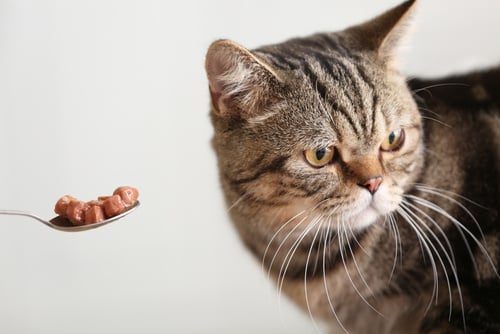
2. Your cat is limping
A limping cat is a clear indication of pain or discomfort. Limping can be caused by a minor injury, a foreign object, a fracture, or arthritis. If your cat is limping, it's best to perform a visual inspection to see if you can identify any obvious injury or foreign object that could be easily removed. But if there's nothing very obvious, then it's best to take the cat to the veterinarian for further examination.
3. Your cat is drinking more water
In general, getting cats to drink water can be a challenge as they derive a significant portion of their moisture from the prey they consume. Cats on a dry food diet should be encouraged to drink water and ideally transitioned to a wet food diet. However, if you notice your cat drinking more than usual or from unusual sources such as a faucet or toilet, it could be a sign that something is amiss.
Endocrine disorders such as diabetes and thyroid issues can cause increased thirst. Endocrine disorders are quite common in older cats, and unfortunately, we also see many cats developing diabetes due to the higher-than-normal carbohydrate content in most dry cat foods. If your cat has suddenly increased their water intake, it's advisable to take them to the veterinarian for blood tests to diagnose the issue.
4. Your cat is urinating more frequently
If a cat appears to be urinating more frequently, it could indicate painful urination. Cats with urinary tract infections or stones experience pain while urinating and typically urinate in smaller amounts but more frequently.
Kidney problems, including kidney failure, can also cause your cat to drink and urinate more than usual. Porus-One can be used to support kidney health in cats.
Blood in the urine or no urine at all is a clear indication that you should urgently take your cat to the veterinarian. This is especially important in the case of male cats. They are prone to developing urethral obstructions (backflow of bladder contents into the urethra), which can be fatal within 24-48 hours if left untreated.
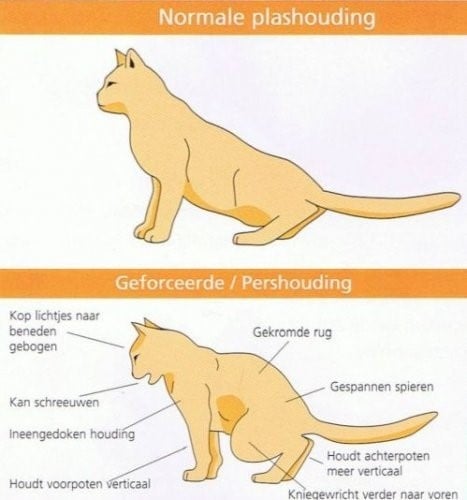
5. Your cat refuses to use the litter box
If a cat refuses to use the litter box, it could also indicate painful urination. Urinary tract infections, bladder stones, and kidney conditions are common causes of litter box changes.
6. A cat with diarrhea
Stomach and intestinal infections, food allergies, stress and anxiety, and irritable bowel syndrome are just a few of the many possible causes of diarrhea in a cat. If your cat has diarrhea, they are at risk of becoming dehydrated, so it's best to quickly identify the cause and treatment. You can start giving Zoolac MultiPaste immediately. If you don't see visible improvement within 24-48 hours, it's best to consult a veterinarian. A dehydrated cat is at risk of organ damage with serious consequences.
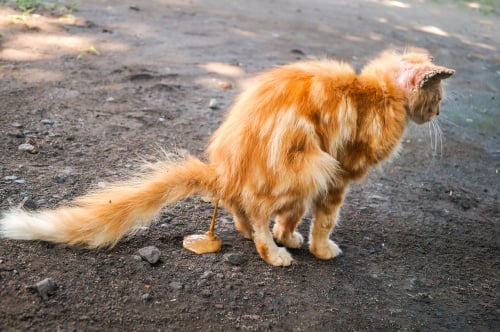
7. Vomiting in your cat
he vomiting of hairballs is considered normal in cats, and some cats vomit sporadically after eating. However, a cat that vomits frequently is at risk of dehydration and requires medical attention. Infections, liver conditions, intestinal obstructions, and even cancer can be the cause of your cat's frequent vomiting. This should be investigated to prevent complications and initiate timely treatment.
Because cats frequently lick their fur and hair, they also regularly ingest hairs. Especially indoor cats often suffer from this. The ingested hairs can cause problems such as vomiting, constipation, and coughing. Lax-A-Past can be used for digestive problems and to prevent cats from getting sick from hairballs.

Here's what a hairball might look like
8. A cat with nasal or ocular discharge
Cats with respiratory infections or eye infections exhibit abnormal mucous discharges. Respiratory infections usually come with other symptoms such as sneezing, wheezing, or coughing. It's best to seek advice and treatment from a veterinarian before the infections worsen. Follow the veterinarian's instructions and remember it's best to isolate cats with contagious infections to prevent transmission to other pets.
In case of red and/or irritated eyes, Ophtosan eye ointment can be used to treat and soothe various eye problems in cats.
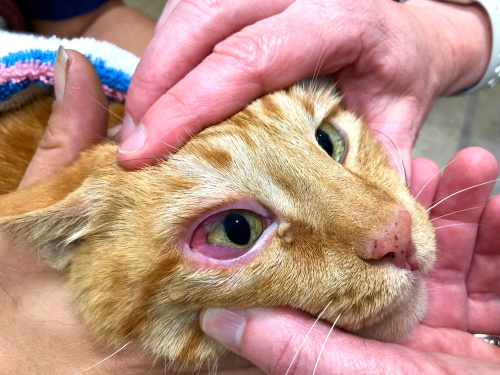
9. Lack of energy
If your cat, who is normally active and playful, suddenly appears lethargic and uninterested, it is a clear sign that they are not feeling well and should be taken to the veterinarian.
10. Changes in grooming habits
Typically, cats are clean animals when it comes to their grooming habits. Cats that are not feeling well will drastically reduce or completely stop their grooming routine. If you notice your cat grooming less than usual or if your cat's coat looks greasy, dull, unkempt, or flaky, this is a sign that something is amiss. It could range from a skin infection to arthritis. Start by investigating potential causes and seek professional advice from a veterinarian.
11. Your cat is losing a lot of hair
If you notice more fur than usual on your carpet and furniture, it's worth checking if it's due to normal shedding rather than a medical condition. Balding patches are not normal in cats and can be caused by skin irritations, infections, or allergies.
12. Your cat has developed foul-smelling breath
A cat with foul-smelling breath is usually an indication of dental issues or an infection in the mouth and should be checked by a veterinarian for cleaning and treatment. Consistent teeth brushing habits should typically help prevent these situations, but once the cat has developed them, they require immediate attention.
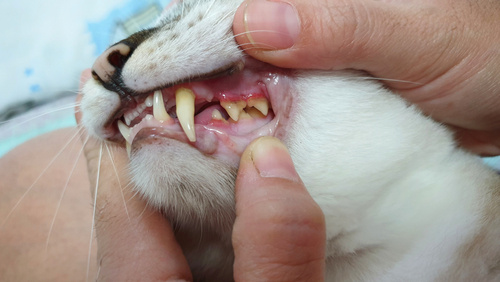
13. Your cat has lost a lot of weight
Many diseases can cause a cat to lose weight. Parasites or diabetes can cause a cat to become thin regardless of whether it eats normally. Other illnesses reduce a cat's appetite and result in weight loss. If you have noticed any of these scenarios without intentionally putting your cat on a diet, take your cat to the vet to investigate the cause of this weight loss.
14. Your cat is hiding
Sommige katten die bang of angstig zijn hebben de neiging zich te verstoppen, maar dat doen katten met pijn ook. Bekijk de situatie, als je normaal gesproken sociale kat je ontwijkt, is dit een teken dat er iets aan de hand is.
15. Aggressive cat
Changes in hormone levels and behavioral issues can cause cats to become aggressive. However, many injured or sick cats become aggressive as a response to discomfort when handled or as a way to seek attention.
16. Your cat is becoming louder
An increased vocalization is a way for the cat to ask for food and attention. However, if your cat becomes louder and more vocal for more than 24-36 hours, regardless of food availability, it may be a way for your cat to indicate that something is wrong.
However, female cats in heat also become louder and more vocal, so all factors should be considered to understand the cause of this behavior. Some neurological problems can cause increased vocalization in cats. Additionally, cats suffering from hearing or vision loss may also vocalize more.
17. Your cat no longer jumps to the spot where it used to sit
This may not be such an obvious sign, but if you've noticed that your cat no longer lies on that high bookshelf where it used to enjoy sitting, it could indicate the development of arthritis or an injury. Arthritis can occur in any joint and often progresses very gradually. Joint supplements like Combicare can be used to support cats with joint problems or mobility issues.
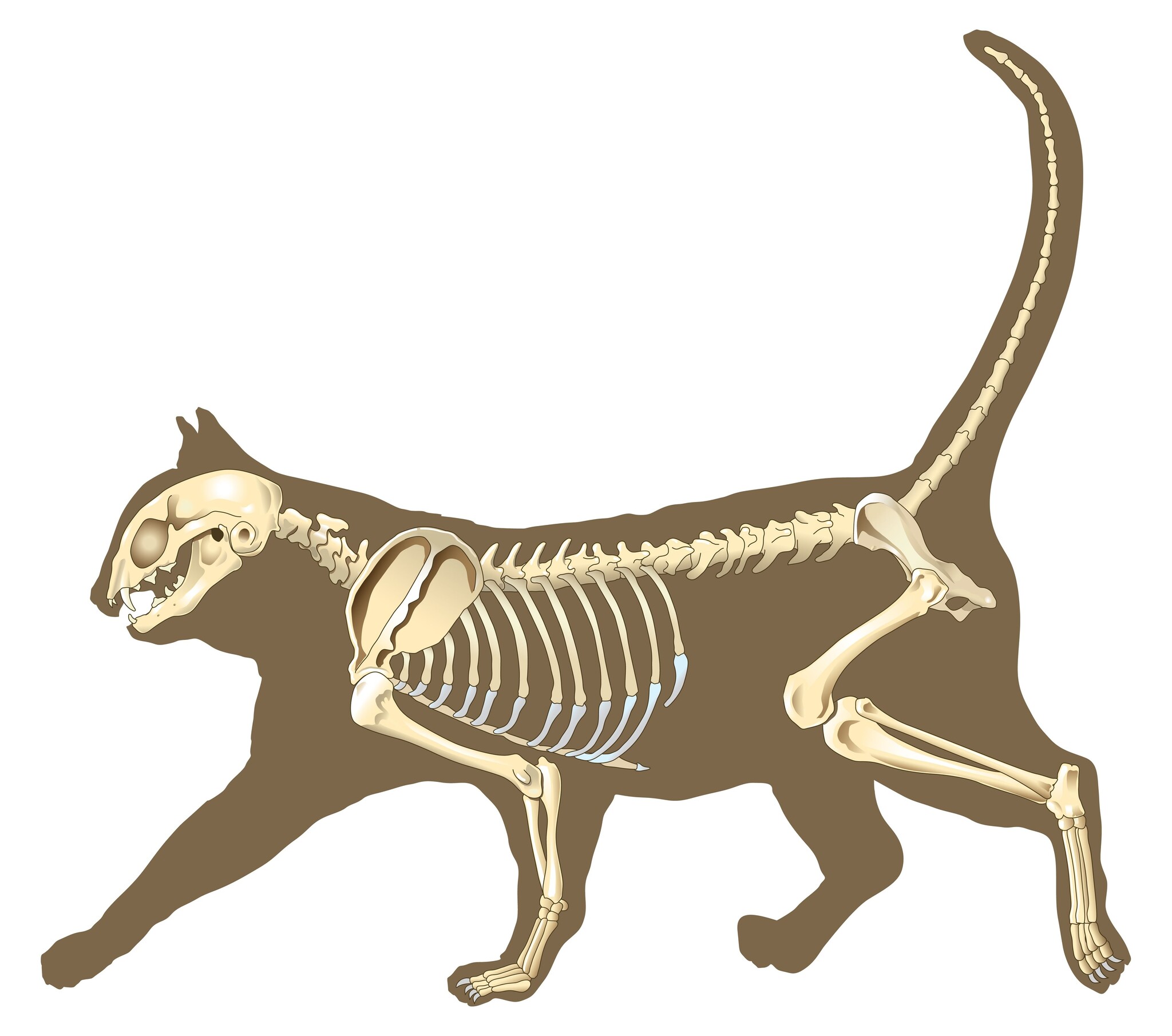
In conclusion
Hiding disease symptoms has always been a survival strategy of the feline, which still prevails in our modern cats. Recognizing the signs of a sick cat can go a long way in preventing complications and potentially saving your cat's life.


